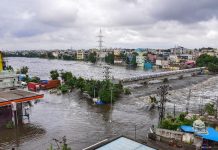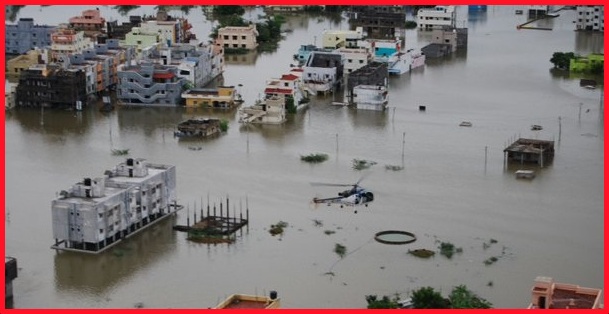The nation is currently battling the coronavirus pandemic and even as it wins the title of one of the worst affected countries in the world, its efforts to control and contain the spread of coronavirus have been going on in full swing with the hope that things will soon come under control. But while the pandemic has drawn our attention and become the centre of the media spectacle, we realise that beginning from India’s health infrastructure to its transportation and manufacturing units, hospitality industry and educational system, its economy and politics- everything has clearly been crippled and taken for a toss amid the coronavirus pandemic.
Amid this chaos and crumbling of institutions, the least one could ask for is the absence of or non-occurrence of another equal damaging, devastating calamity such as floods. But unlike what one would have liked, the floods are an annual occurrence in India and this year too, they decided against sparing thousands of people in flood prone states like Assam and Bihar.
The intensity of loss and devastation that floods are capable of causing is beyond the cognisance of someone who hasn’t witnessed what people in flood affected states go through, when every belonging whether it is the structure of the house itself or the cattle one has held dear for years is washed away within minutes. The sense of loss, helplessness and fear that grip people, a large chunk of whom come from already poor and marginalised families is beyond what can be put into words or described. The least one can ask for or underline as a necessity amid these trying and challenging times is for the nation-state to take immediate and urgent action towards strengthening our infrastructural apparatus to help people during natural calamities like floods.
India experiences floods almost like an annual ritual and a certain number of states are among the most prone to it and seldom do we see a year passing by, without these states losing life and property to devastating floods. This year, the month of June was the wettest in the last one decade or more and this means that the eastern parts of the country (especially states like Bihar, Assam, Odisha, West Bengal)received so much rain that it couldn’t be absorbed by the land adequately, this only paved way for the floods to cause a higher intensity of damage and gave way to high degree of water logging.
The capacity of natural soil to absorb water was far exceeded, incessant rains and flooding accompanied by restrictions imposed due to the spread of the coronavirus infection added to the delay and inadequacy of relief work. The obstacles on the way made it very difficult for relief teams to carry out their operations on time, authorities to access the extent of damage, affected people to reach out for and be taken to safer locations. The state of Assam is currently experiencing a massive havoc unleashed by floods and most rivers and tributaries in the state are running above the danger mark.
But does this not imply that the other most flood affected state in the country, Bihar, should really get on its toes and begin taking important precautionary measures before the annual floods begin to take a toll on it? Embankment breaching, readying of relief teams and sustained measures to access and regulate the situation are key to damage control in Bihar, but is the government paying any attention to these necessities?
The other most important challenge before the Centre and flood affected state governments is to ensure that when people are rescued and taken to relief camps, over-crowding and lack of hygiene does not lead to the spread of the coronavirus infection. Every year floods do occur and affected populations are rescued and taken to a higher ground and shifted to relief camps until the situation turns normal, but this year the floods are not the only challenge. The main challenge will be to make sure that social distancing and hygiene protocols are maintained so that infection doesn’t spread inside relief camps and make matters worse for the state government and its people.
Moreover, states such as Bihar where an already fragile healthcare apparatus is widely prevalent, during the times of the pandemic, a chunk of the medical resources and staff have been absorbed in Covid care work, how will the affected states be ready to take on the challenge?
Amid this situation, it becomes an even bigger challenge to make sure that the infection doesn’t reach to unprecedented scales such that it cannot be handled by the state anymore.
It is therefore the need of the hour to make sure that before the floods take an uncontrollable turn and impact thousands of people, the eastern states learn a lesson from what is presently happening in flood-affected Assam and make sure that they are prepared to take on the twin-challenges posed by the coronavirus pandemic and the likelihood of destructive floods. But are the state authorities listening?














